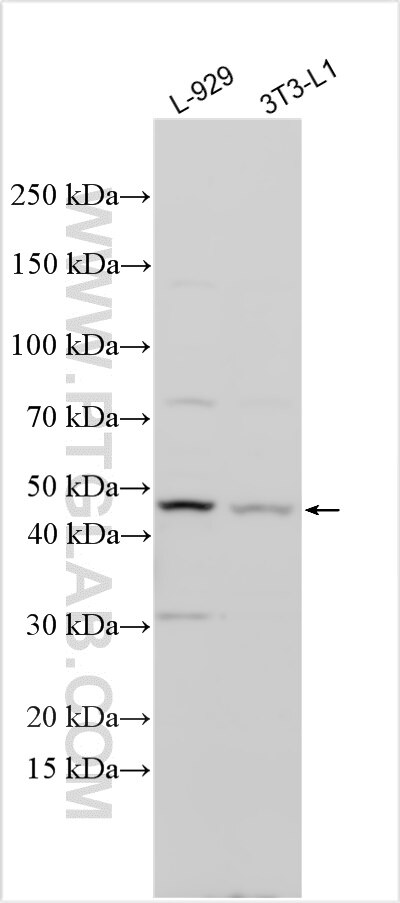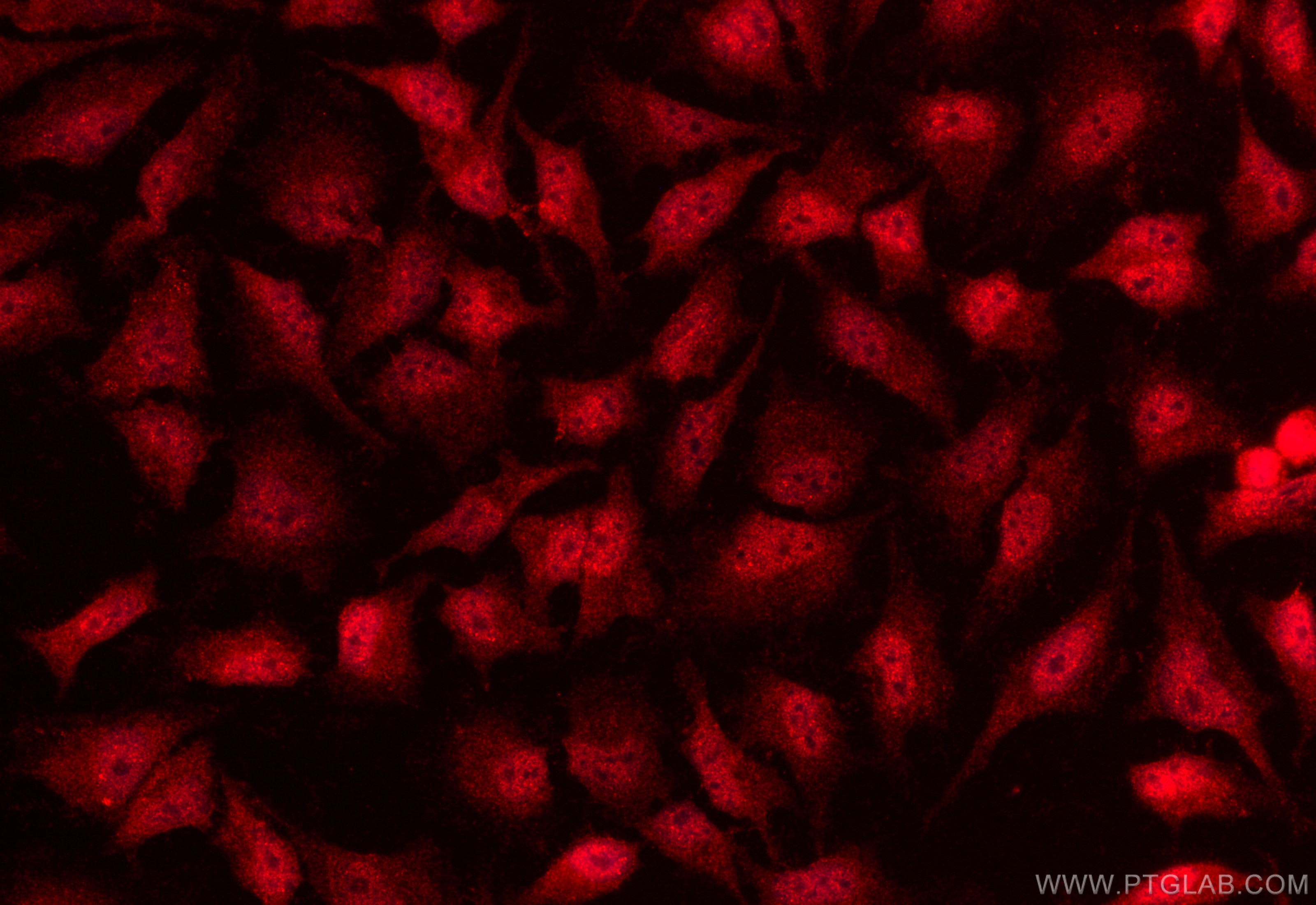Tested Applications
| Positive WB detected in | L-929 cells, 3T3-L1 cells |
| Positive IF/ICC detected in | HeLa cells |
Recommended dilution
| Application | Dilution |
|---|---|
| Western Blot (WB) | WB : 1:500-1:2000 |
| Immunofluorescence (IF)/ICC | IF/ICC : 1:50-1:500 |
| It is recommended that this reagent should be titrated in each testing system to obtain optimal results. | |
| Sample-dependent, Check data in validation data gallery. | |
Product Information
17197-1-AP targets WDFY2 in WB, IF/ICC, ELISA applications and shows reactivity with human, mouse samples.
| Tested Reactivity | human, mouse |
| Host / Isotype | Rabbit / IgG |
| Class | Polyclonal |
| Type | Antibody |
| Immunogen |
CatNo: Ag10415 Product name: Recombinant human WDFY2 protein Source: e coli.-derived, PGEX-4T Tag: GST Domain: 72-400 aa of BC014004 Sequence: SCMSFNPETRRLSIGLDNGTISEFILSEDYNKMTPVKNYQAHQSRVTMILFVLELEWVLSTGQDKQFAWHCSESGQRLGGYRTSAVASGLQFDVETRHVFIGDHSGQVTILKLEQENCTLVTTFRGHTGGVTALCWDPVQRVLFSGSSDHSVIMWDIGGRKGTAIELQGHNDRVQALSYAQHTRQLISCGGDGGIVVWNMDVERQETPEWLDSDSCQKCDQPFFWNFKQMWDSKKIGLRQHHCRKCGKAVCGKCSSKRSSIPLMGFEFEVRVCDSCHEAITDEERAPTATFHDSKHNIVHVHFDATRGWLLTSGTDKVIKLWDMTPVVS Predict reactive species |
| Full Name | WD repeat and FYVE domain containing 2 |
| Calculated Molecular Weight | 400 aa, 45 kDa |
| Observed Molecular Weight | 45 kDa |
| GenBank Accession Number | BC014004 |
| Gene Symbol | WDFY2 |
| Gene ID (NCBI) | 115825 |
| Conjugate | Unconjugated |
| Form | Liquid |
| Purification Method | Antigen affinity purification |
| UNIPROT ID | Q96P53 |
| Storage Buffer | PBS with 0.02% sodium azide and 50% glycerol, pH 7.3. |
| Storage Conditions | Store at -20°C. Stable for one year after shipment. Aliquoting is unnecessary for -20oC storage. 20ul sizes contain 0.1% BSA. |
Background Information
WDFY2, also named Prof, is a protein that contains WD repeats and an FYVE domain. WDFY2 regulates the membrane-bound matrix metalloproteinase MT1-MMP (MMP14) efflux by controlling endosome sorting. WDFY2 may act as a tumor suppressor by limiting VAMP3-dependent recycling to inhibit matrix metalloproteinase secretion and cell invasion (PMID: 31253801). WDFY2 in the cell nucleus directly participates in homologous recombination-mediated DNA repair (PMID: 41196680).
Protocols
| Product Specific Protocols | |
|---|---|
| IF protocol for WDFY2 antibody 17197-1-AP | Download protocol |
| WB protocol for WDFY2 antibody 17197-1-AP | Download protocol |
| Standard Protocols | |
|---|---|
| Click here to view our Standard Protocols |






